On the table in week 3
Tommaso
Sacco di Roma Graffiti
On the table week 3: An uninvited guest
It was also a dark week from a culinary point of view: Orange peel, honey and herring. Breakfast is mentioned twice, but not in a good way: If you are a little princess, be aware of Ann Cromwell, she might eat you for breakfast (I would feel more at ease if Mantel had written Diner instead of Breakfast in this sentence). But no matter what you have for breakfast, death could already be sitting at your table. And then there are these other dark, eerie references to eating1.
Hans Holbein´s Dance of Death, 1523-1525, The King2
Orange peel
“…now that Boleyn has been torn into strips and dropped on the ground like orange peel.” Has the cardinal gone too far? Cromwell feels a slight uneasiness. He's right, if you don't cut the orange peel into small pieces, what does it look like? Like an orange serpent. Cornelis de Heem: Detail from “Nature morte aux fleurs, fruits et crustacés”
Honey
“The scriptures, to me, are as honey,” says Little Bilney. But these texts are difficult to obtain. The translations of the Bible, all the other books that you shouldn't have, that have to be hidden. Difficult to get, often dangerous to have. And Cromwell is also reading one of these texts, Niccolò Machiavelli´s “The Prince”3. The Beekeepers and the Birdnester by Pieter Brueghel, the Elder, ca 1568
Tommaso
Not much is known about Cromwell's time in Italy. Whilst Cromwell remains silent when asked about it, this week Mantel throws a piece of the Italian jigsaw puzzle at me that is marvelous to speculate on what might have happened:
Thinking about Machiavelli on the battlefield and in the torture chamber Cromwell uses twice his first name: Niccoló. It seems as if he actually knows Machiavelli personally, why else would he think of him in this informal, personal manner?
After the return of the Medici Machiavelli was accused by the Medici of being involved in a conspiracy, thrown into prison and severely tortured in 1513.
We know from Cromwell, that he lived in Florence for a while. In 1512 the Medici and the head of the family Cardinal Giovanni de Medici returned to power in Florence with the help of Spanish and papal troops4. Shortly afterwards Cardinal Giovanni de Medici became pope (Leo X. 1513-1512). Always around him in these years was his nephew Giulio de Medici, who became Archbishop of Florence in 1513. In 1523 he became pope, Giulio is the pope of our book- Clement VII. (1523-1534)
So I wonder how well did Cromwell knew Macchiavelli, was he in Florence around 1512/13? And he probably had a better knowledge of Clement VII than one might expect? Oh these rabbit holes, I love them. Portrait of Leo X. by Raphael 1518, on his left side: Giulio de Medici (the later Pope Clement VII.)
Saco di Roma Graffiti
‘1528 – was sol ich schreiben und nit lachen die Lanzknecht habenn den babst lauffen machen” - 1528 what should I write and not laugh the Lanzknecht have made the pope run” Villa Farnesina, Graffiti on a fresco in the “Sala delle Prospettive” 1528
drinker of blood, eating a princess for breakfast, roasting live babies, he tasted it, almost bit his own wrist, she tastes of salt, merry at breakfast, dead by noon
More info: https://www.gla.ac.uk/myglasgow/library/files/special/exhibns/death/holbein.html
Full text: https://www.gutenberg.org/files/1232/1232-h/1232-h.htm
https://en.wikipedia.org/wiki/Republic_of_Florence




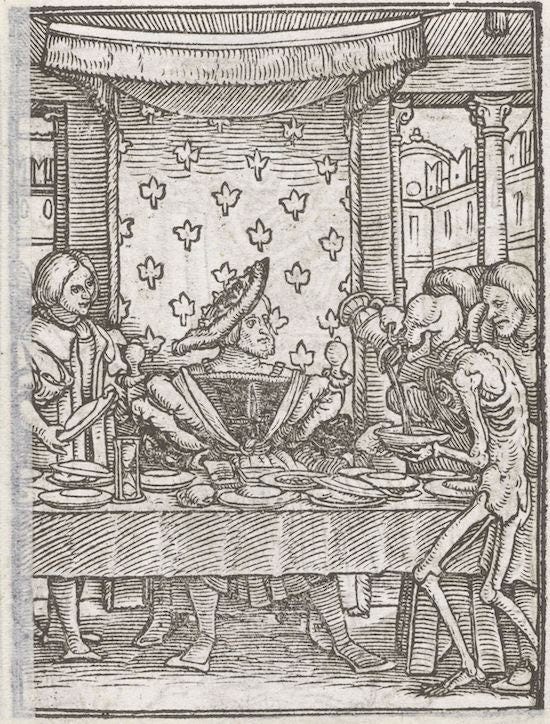
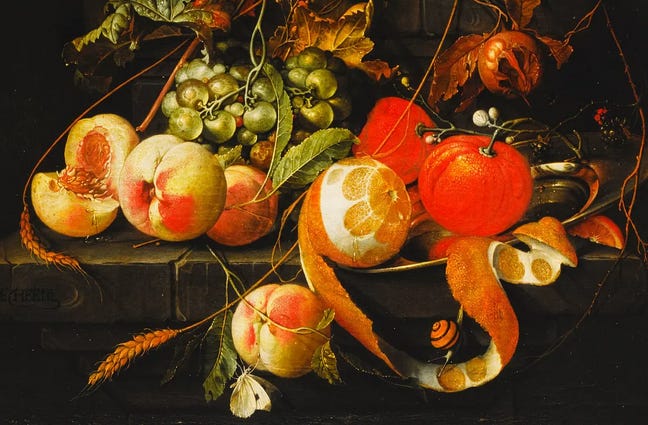
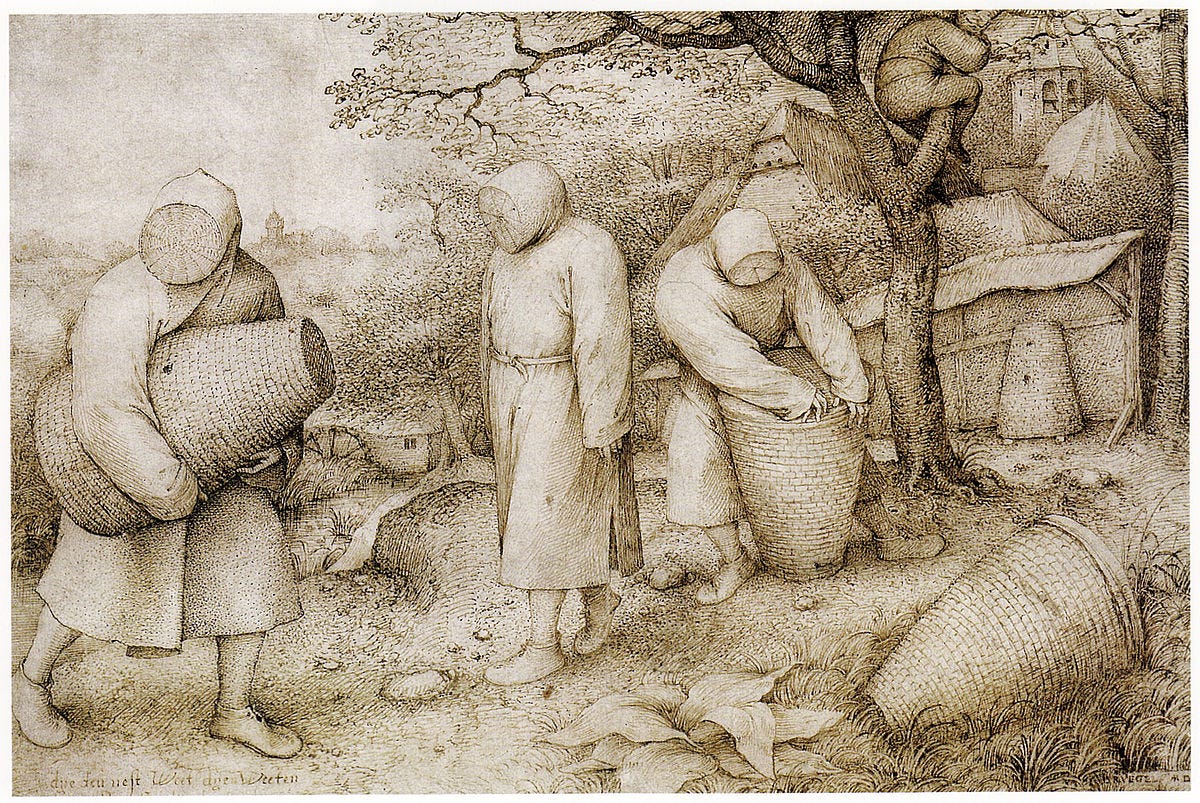
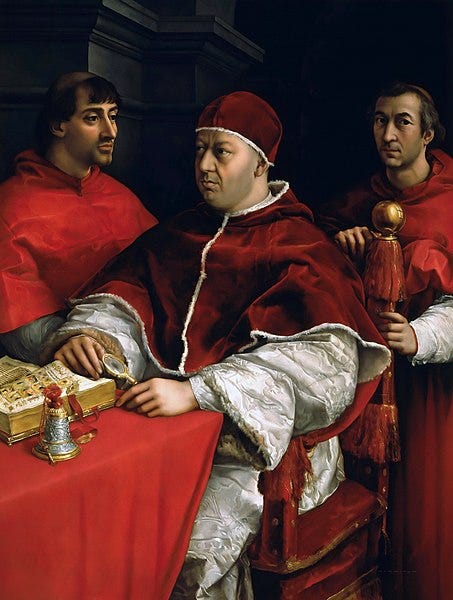
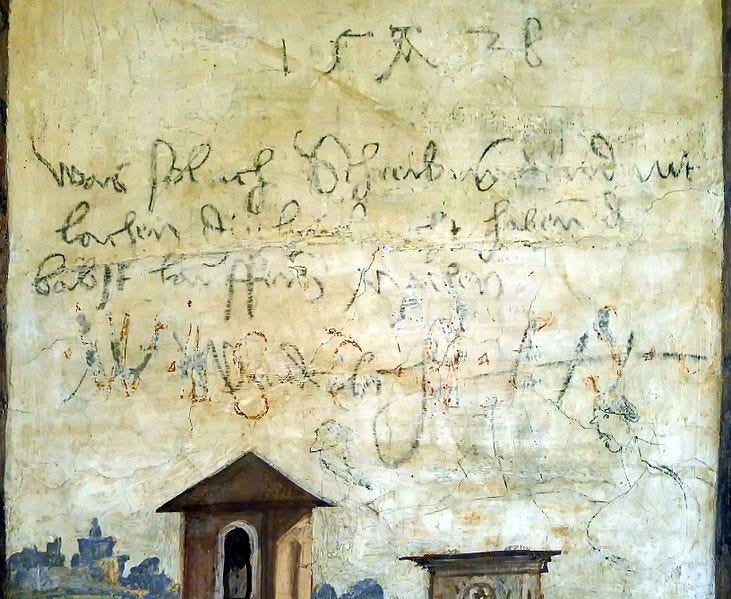
It's very interesting. The picture really emphasises the idea of Thomas Boleyn, bent on revenge, having been chastised by Wolsey: 'the falling orange peel creating an orange serpent.'
Wonderful stuff! Thank you.